Sports drinks and electrolyte-infused waters aren’t the only game in town
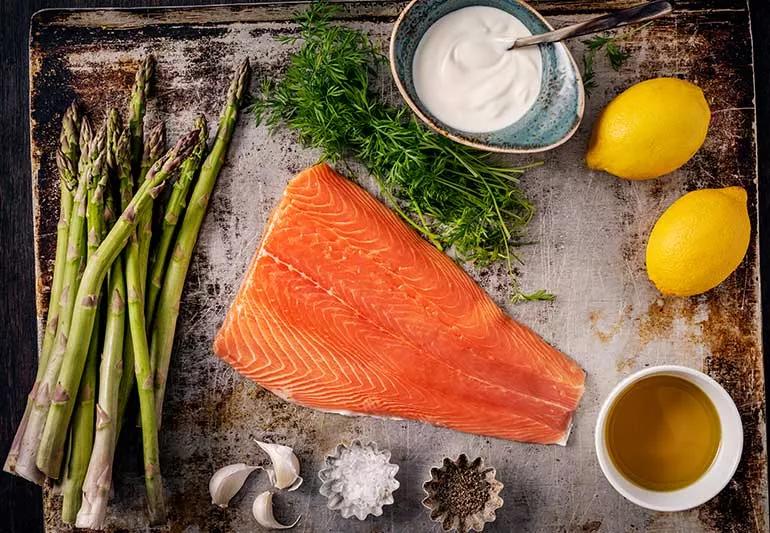
Electrolytes. The name is reminiscent of a 1960s toy, a 1970s English rock band and a 1990s dance craze. You can find them on the sidelines at the big game and in most aisles at the grocery store. You know they’re vitally important, and you don’t think twice about stocking up on them, but you can’t quite put your finger on why.
Advertisement
Cleveland Clinic is a non-profit academic medical center. Advertising on our site helps support our mission. We do not endorse non-Cleveland Clinic products or services. Policy
We talked to registered dietitian Julia Zumpano, RD, LD, to learn what electrolytes are, why we need them and the best ways to replenish them when we’re running low.
Anybody who grew up playing sports — or who’s been laid low by stomach bugs — could probably tell you that electrolytes are important. But for many of us, our knowledge stops there.
“Electrolytes are a topic I don’t think most people understand,” Zumpano says. “The general public knows we need electrolytes. But they’re not really sure why, and they’re not really sure when and how we should take them in.”
So, what exactly are electrolytes, and why are they such a big deal?
Zumpano describes electrolytes as electronically charged minerals that help regulate several processes in our body. It may be weird to think about our bodies as electric, but they are. Without electrical pulses, our organs wouldn’t be able to communicate with each other, and the whole complex system would break down.
“Electrolytes regulate our pH and our fluid balance. They are essential for our heart, our muscles, our brain and our nerves to function,” she explains. “So, they’re really, really important.”
As you can probably imagine, maintaining a proper balance of electrolytes is essential. When that balance is thrown off, you can experience a wide range of symptoms, depending on the nature of the imbalance. “There are so many side effects because there are so many electrolytes,” Zumpano notes. “So, each one may lead to a slightly different side effect.”
Advertisement
According to Zumpano, some of the most common symptoms of an electrolyte imbalance are:
So, electrolytes are definitely important, but what exactly are the electronically charged minerals we need to be consuming? Pull out your periodic table because we’re about to get science-y!
There are seven key elements that you need to maintain normal electrolyte levels. Those elements are:
Zumpano explains that each electrolyte has different properties and purposes.
“It’s really important that we have a balance of all the electrolytes,” she emphasizes. “We can’t just focus on one. They’re all essential and each works a little differently in the body — but they all work together. So, it’s really important to make sure you’re consuming all of your electrolytes in adequate amounts.”
Here are the basic properties of each electrolyte, as well as the daily recommended value by age. These guidelines are a good starting point, but — for a whole host or different reasons — some of us need more electrolytes. More on that later.
Sodium is crucial for both helping cells absorb nutrients and maintaining the balance of fluids in your body. It’s also the most abundant electrolyte ion in the human body.
Federal guidelines recommend consuming less than 2,300 milligram (mg) of sodium a day. Active, healthy people should be getting over 1,500 mg a day, so it’s important to monitor your intake closely. The table below sets out the minimum amount of sodium we need to stay healthy by age.
| Age | Adequate intake (AI) |
|---|---|
| Birth–6 months | 110 mg |
| 7–12 months | 370 mg |
| 1–3 years | 800 mg |
| 4–8 years | 1,000 mg |
| 9–13 years | 1,200 mg |
| 14+ years | 1,500 mg |
| Age | |
| Birth–6 months | |
| Adequate intake (AI) | |
| 110 mg | |
| 7–12 months | |
| Adequate intake (AI) | |
| 370 mg | |
| 1–3 years | |
| Adequate intake (AI) | |
| 800 mg | |
| 4–8 years | |
| Adequate intake (AI) | |
| 1,000 mg | |
| 9–13 years | |
| Adequate intake (AI) | |
| 1,200 mg | |
| 14+ years | |
| Adequate intake (AI) | |
| 1,500 mg |
Sodium is the most abundant ion in our bodies, but chloride is a close second. It plays an essential role in the regulation of both fluid and acid levels in our bodies.
| Age | Daily reference value (DRV) | Pregnant or lactating |
|---|---|---|
| Birth–12 months | 570 mg | – |
| 1–3 years | 1,500 mg | – |
| ≥ 4 years | 2,300 mg | 2,300 mg |
| Age | ||
| Birth–12 months | ||
| Daily reference value (DRV) | ||
| 570 mg | ||
| Pregnant or lactating | ||
| – | ||
| 1–3 years | ||
| Daily reference value (DRV) | ||
| 1,500 mg | ||
| Pregnant or lactating | ||
| – | ||
| ≥ 4 years | ||
| Daily reference value (DRV) | ||
| 2,300 mg | ||
| Pregnant or lactating | ||
| 2,300 mg |
Potassium works alongside sodium to regulate our fluid balance, but it also plays a vitally important role in muscle and nerve function — particularly in your heart. In fact, people with high blood pressure should speak to their provider — they may benefit from a high potassium diet.
| Age | Daily reference value (DRV) | Pregnant or lactating |
|---|---|---|
| Birth–12 months | 700 mg | – |
| 1–3 years | 3,000 mg | – |
| ≥ 4 years | 4,700 mg | 5,100 mg |
| Age | ||
| Birth–12 months | ||
| Daily reference value (DRV) | ||
| 700 mg | ||
| Pregnant or lactating | ||
| – | ||
| 1–3 years | ||
| Daily reference value (DRV) | ||
| 3,000 mg | ||
| Pregnant or lactating | ||
| – | ||
| ≥ 4 years | ||
| Daily reference value (DRV) | ||
| 4,700 mg | ||
| Pregnant or lactating | ||
| 5,100 mg |
When we hear the word “calcium,” we tend to think about bones. We’re not wrong to do so — calcium is a crucial building block of strong bones. But it serves equally important functions for your muscles, nerves and heart.
| Age | Daily reference value (DRV) | Pregnant or lactating |
|---|---|---|
| Birth–12 months | 260 mg | – |
| 1–3 years | 700 mg | – |
| ≥ 4 years | 1,300 mg | 1,300 mg |
| Age | ||
| Birth–12 months | ||
| Daily reference value (DRV) | ||
| 260 mg | ||
| Pregnant or lactating | ||
| – | ||
| 1–3 years | ||
| Daily reference value (DRV) | ||
| 700 mg | ||
| Pregnant or lactating | ||
| – | ||
| ≥ 4 years | ||
| Daily reference value (DRV) | ||
| 1,300 mg | ||
| Pregnant or lactating | ||
| 1,300 mg |
Magnesium is crucial for both brain and muscle function, including that all-important muscle: your heart. Zumpano also notes that this mineral helps convert nutrients into energy. A magnesium deficiency, accordingly, can be a common cause of fatigue.
Advertisement
| Age | Daily reference value (DRV) | Pregnant or lactating |
|---|---|---|
| Birth–12 months | 75 mg | – |
| 1–3 years | 80 mg | – |
| ≥ 4 years | 420 mg | 400 mg |
| Age | ||
| Birth–12 months | ||
| Daily reference value (DRV) | ||
| 75 mg | ||
| Pregnant or lactating | ||
| – | ||
| 1–3 years | ||
| Daily reference value (DRV) | ||
| 80 mg | ||
| Pregnant or lactating | ||
| – | ||
| ≥ 4 years | ||
| Daily reference value (DRV) | ||
| 420 mg | ||
| Pregnant or lactating | ||
| 400 mg |
Zumpano describes phosphates as phosphorus-based molecules that help our bodies metabolize nutrients. She also describes it as one of the foundational components of molecules called nucleotides, which serve as the building blocks of our DNA.
| Age | Daily reference value (DRV) | Pregnant or lactating |
|---|---|---|
| Birth–12 months | 275 mg | – |
| 1–3 years | 460 mg | – |
| ≥ 4 years | 1,250 mg | 1,250 mg |
| Age | ||
| Birth–12 months | ||
| Daily reference value (DRV) | ||
| 275 mg | ||
| Pregnant or lactating | ||
| – | ||
| 1–3 years | ||
| Daily reference value (DRV) | ||
| 460 mg | ||
| Pregnant or lactating | ||
| – | ||
| ≥ 4 years | ||
| Daily reference value (DRV) | ||
| 1,250 mg | ||
| Pregnant or lactating | ||
| 1,250 mg |
Bicarbonate is made in the kidneys using the carbon dioxide that your body doesn’t expel through your breath. It helps regulate your body’s pH levels. Most of us make all the bicarbonate we need.
While the majority of us can get our normal electrolytes in through a healthy diet, there are plenty of us who don’t eat as well as we should, or whose bodies or lifestyles demand higher intake. We’re also more vulnerable to electrolyte imbalance at certain ages and stages of life. Infants, young children and older adults are higher risk in this regard. These populations also tend to need an extra boost:
Advertisement
“It really is a very personalized thing,” Zumpano states. “In general, if we eat healthy, we should be able to obtain all of the electrolytes we need. But if you know you’re not eating so healthy, or you’re exercising strenuously, or you’re a super sweater, you really want to consider replenishing those electrolytes. You’ll almost feel better immediately.
Most people get all the electrolytes they need through the food they eat, and don’t need to worry about supplementation of any kind unless they’re sick.
While you’ll find different electrolytes in a whole bunch of different foods, Zumpano says there’s a common theme: They’re most plentiful in whole foods, especially fruits and vegetables. In other words, if you’re eating a plant-based or predominantly plant-based diet — and avoiding processed foods — you’re probably getting what you need.
Zumpano recommends the following to electrolyte-conscious eaters:
When you hear the word “electrolytes,” it probably conjures an image of a brightly colored sports drink. Is that because they’re the best source of electrolytes?
Advertisement
Zumpano doesn’t think so. “I think that they are very highly and well marketed,” she clarifies. In fact, the drawbacks of sports drinks often outweigh their benefits.
“They do have some electrolytes added to the water, but they generally have a good amount of sugar and dye added, depending on the brand,” she adds. When choosing an electrolyte replacer or enhanced beverage, Zumpano recommends looking at the ingredients.
“Make sure it really does have adequate quantity of electrolytes and it’s not mainly sugar, artificial sugar, and food dye,” she urges. Be especially attentive to the amount of sodium, potassium, magnesium and calcium in each product.
One of the many alternatives to sports drinks — electrolyte enhanced waters — have also grown in popularity. “These products are just plain water that have the electrolyte minerals added,” Zumpano explains. They tend to have more electrolytes than sports drinks, and none of the sugars and dyes.
But those aren’t the only two ways to drink your way to a better balance.
If you need to replenish your electrolytes fast, Zumpano is a fan of electrolyte powders and tablets. All you have to do is pour the pre-measured packet of powder (or drop the tablet) into a container of water and mix it up. Generally speaking, these options can be on the healthier side.
“These can generally have less sugar, no dye and a greater volume of what you really need,” she adds.
“You really need to read labels and compare, but from what I’ve researched, most of the tablets and powders are between 25 and 50 calories and have a gram or two of sugar,” she continues. “When you look at a standard sports drink, you’re looking at up to 150 calories per bottle and up to 20 grams of sugar, maybe more.”
Zumpano reiterates that you shouldn’t assume that electrolyte powders and tablets are good for you. You have to do your homework.
“Take the time to read and compare labels. And be educated on what you’re putting in your body,” she advises.
If you love a DIY project, you might consider making your own electrolyte drink. If nothing else, it’ll probably be a whole lot tastier that the alternatives!
There are a lot of recipes out there, but Zumpano does note that there are certain ingredients that, necessarily, pop up over and over again.
“Make a nice pitcher of your electrolyte punch and have it in the fridge to sip on throughout the day,” Zumpano suggests. “You can also make it and chill it so or have it ready after an activity, like doing yard work, going swimming or whatever you might be doing where you’re sweating more and need some of that hydration replenished.”
And if any of the ingredients above bum you out, rest assured: There are plenty of other ingredients you can try that pack an electrolyte punch, like pomegranate juice, turmeric and even watermelon water!
Now that you know how important electrolytes are to your overall health, you may find yourself wanting to keep your electrolyte drink of choice velcroed to your hand. But that’s not a good idea because, as Zumpano explains, balance is everything.
“We can certainly experience negative effects from too much potassium, too much sodium, too much calcium, any of these electrolytes in excess can lead to really negative health outcomes,” she says.
She recommends drinking one or two electrolyte drinks a day — maybe more, depending on your activity level. It’s easy to overconsume these electrolyte drinks, limit to 16 fluid ounces maximum throughout the day on a normal active day.
“See how you feel,” she says. “You don’t want to over consume. You want to be very aware of what your body needs and how much your body is losing through liquid and sweat. And then, just replenish what’s lost. Don’t go overboard.”
Electrolytes are essential minerals that help your body function. Most of us get all the electrolytes we need from our diet, but some people and certain medical circumstances require higher intake than others.
When you’re running low, or your electrolytes are imbalanced — like after a workout or when you’re sick — you’ll feel it. Different physical processes will break down, causing a wide range of symptoms, from thirst and muscle camps to brain fog and an irregular heartbeat.
Luckily, you’ll be back in business in no time if you eat the right foods or grab the right drink. Sports drinks, electrolyte infused waters, and electrolyte powders and tablets can all do the job but need to be reviewed carefully. You want the electrolytes, not a bunch of added sugar or dyes.
You can also get creative by making your own electrolyte beverage. However you decide to replenish, just remember the importance of moderation. Too much of any of these minerals could cause health complications.
Learn more about our editorial process.
Advertisement
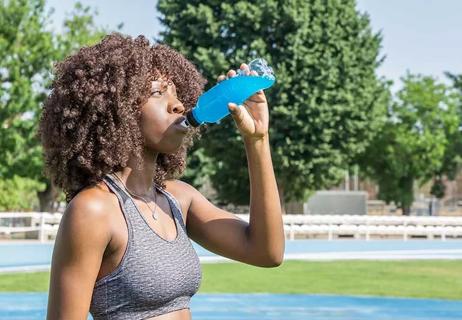
Two key electrolytes — sodium and chloride — are the building blocks of salt
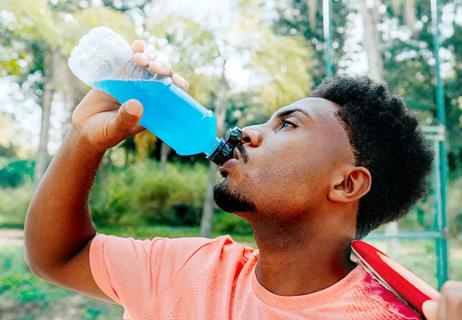
Sports drinks are best when needed — and that’s not all the time

What you do in the hours and days after exercise can determine how your body bounces back
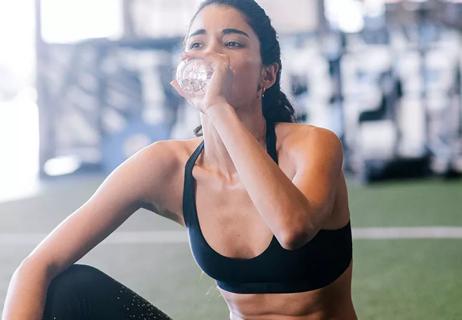
This treat from the trees can help replace lost electrolytes
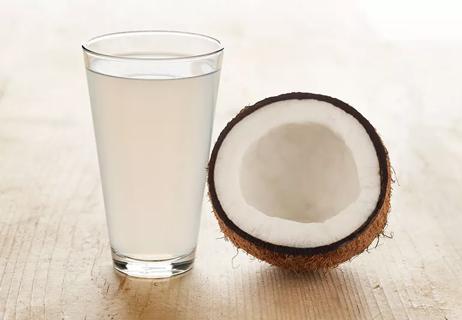
Here’s why this drink is a nutritious option
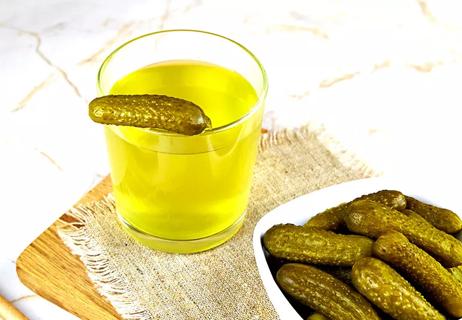
From probiotic powerhouse to hangover cure

Health benefits + a simple recipe

Type 2 diabetes isn’t inevitable with these dietary changes

Applying a hot or cold compress can help with pain